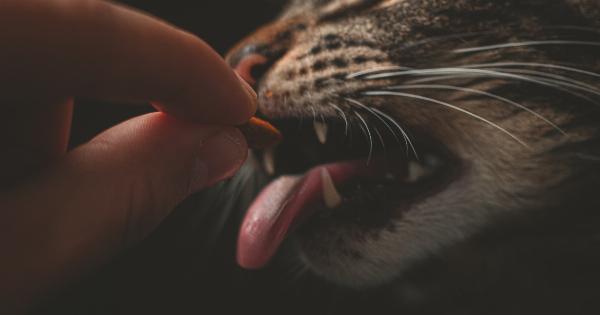Cats have been domesticated for centuries and have become an integral part of our lives. They are cute, cuddly, and make great companions. However, recent studies have shown that our love for cats may be putting us at risk for certain diseases.
Let’s delve into these risks and find out how we can protect ourselves while still enjoying the company of our feline friends.
Allergies
Cats are one of the most common allergens, with over 10 million people in the U.S. alone experiencing allergic reactions to them. Allergies to cats are caused by a protein called Fel d 1, which is found in their saliva, urine, and dander.
When a person with allergies comes into contact with this protein, their immune system overreacts, causing a variety of symptoms, such as sneezing, coughing, itching, and watery eyes.
Although there is no cure for cat allergies, there are ways to manage them. One of the most effective methods is to minimize exposure to cats.
This can be done by keeping cats out of certain areas of the house, such as the bedroom or the living room, and using air filters and HEPA vacuums to remove allergens from the air. Additionally, allergy shots may help reduce the severity of symptoms over time.
Toxoplasmosis
Infection with Toxoplasma gondii, a parasite found in cat feces, is another risk associated with owning cats.
Although most people who contract toxoplasmosis experience no symptoms, the infection can cause flu-like symptoms, such as fever, headache, and muscle aches. In rare cases, it can lead to more serious complications, such as eye infections, seizures, and brain damage.
Pregnant women and individuals with weakened immune systems are particularly vulnerable to toxoplasmosis and should take special precautions, such as avoiding cleaning the litter box and washing hands thoroughly after handling cats or touching their feces. Regular cleaning of the litter box is also important, as the parasite can only become infectious after spending 1-5 days in the cat’s feces.
Rabies
Rabies is a viral disease that affects the nervous system and can be fatal if left untreated. Although rare in cats in the U.S., it is still possible for them to contract the disease and transmit it to humans through bites or scratches.
It’s important to vaccinate cats against rabies and keep them indoors to reduce their risk of exposure to infected animals.
Cat Scratch Disease
Cat scratch disease is caused by a bacterium called Bartonella henselae, which is found in the saliva of infected cats. Most people with cat scratch disease experience mild symptoms, such as fever and swollen lymph nodes, and recover without treatment.
However, in rare cases, it can lead to more serious complications, such as nerve damage and swelling of the brain.
To reduce the risk of cat scratch disease, it’s important to avoid rough play with cats and to wash any scratches or bites immediately with soap and water.
Individuals with weakened immune systems should take extra precautions, such as wearing gloves when handling cats and avoiding contact with stray cats.
Asthma
Cats can also be a trigger for asthma, a chronic respiratory disease that affects millions of people worldwide. Exposure to cat allergens can cause inflammation and narrowing of the airways, making it difficult to breathe.
Avoiding cats altogether is the best way to manage cat-induced asthma, but this is not always possible for cat owners.
Other ways to reduce the risk of asthma attacks include using air purifiers and HEPA vacuums, keeping cats out of certain areas of the house, and washing bedding and curtains regularly.
Fleas and ticks
Cats are prone to infestations of fleas and ticks, which can cause itching, irritation, and even transmit diseases, such as Lyme disease and Rocky Mountain spotted fever, to humans.
Regular grooming and use of flea and tick preventatives can help reduce the risk of infestation. It’s also important to vacuum frequently and wash bedding and other areas where cats spend time to remove flea eggs and larvae.
Conclusion
Our love for cats can come with potential risks and health hazards. However, with careful management, we can still enjoy the companionship of our feline friends without putting ourselves in harm’s way.
By taking simple precautions, such as keeping cats out of certain areas of the house, washing hands regularly, and vaccinating against rabies, we can ensure a safe and healthy relationship with our four-legged companions.






























